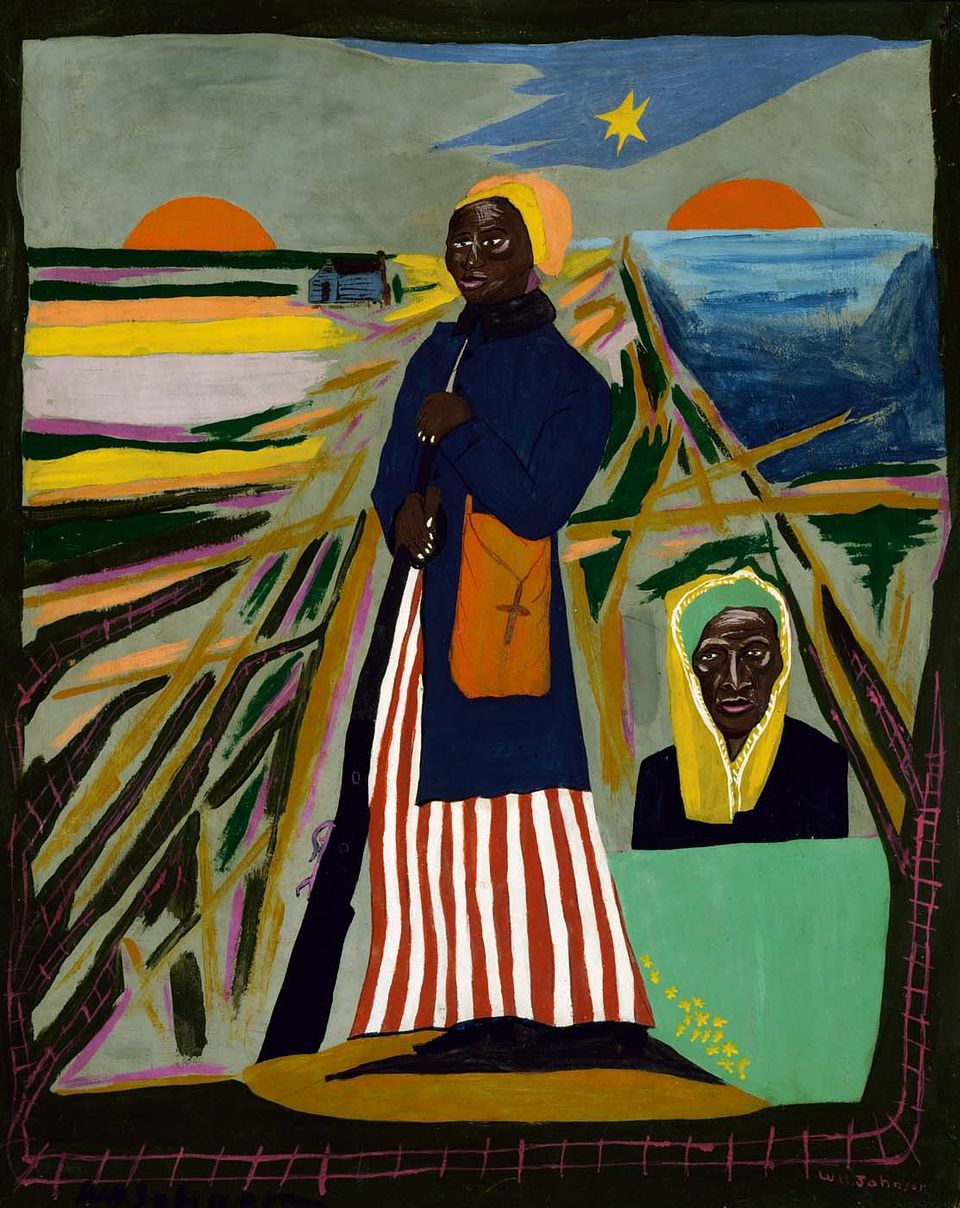Artwork Details
- Title
- Three Great Abolitionists: A. Lincoln, F. Douglass, J. Brown
- Artist
- Date
- ca. 1945
- Location
- Not on view
- Dimensions
- 37 3⁄8 x 34 1⁄4 in. (94.9 x 87.0 cm.)
- Credit Line
- Gift of the Harmon Foundation
- Mediums
- Mediums Description
- oil on paperboard
- Classifications
- Subjects
- Portrait male — Lincoln, Abraham
- Allegory — civic — unity
- History — United States — Black History
- State of being — death — execution
- Portrait male — Brown, John
- Portrait male — Douglass, Frederick
- Object Number
- 1983.95.51
Artwork Description
In Three Great Abolitionists Fredrick Douglass (1817--1895) clasps hands with John Brown (1800--1859) and President Abraham Lincoln (1809--1865). Brown represents the lead-up to the Civil War with his violent raid on Harper's Ferry; Lincoln signals its end and with it the abolition of slavery. Surrounding these figures, cotton bolls and men plowing indicate the backbreaking toil of enslaved agricultural workers. At the lower left, African American women raise their arms in praise.
In the 1850s Brown had led skirmishes in Kansas, prompted by the debate over whether Kansas would enter the union as a free or slave state. He reached out to Douglass several months before the raid on Harper's Ferry. Douglass was certain Brown's mission would end in death, so declined to back Brown, although he understood the abolitionist intended to strike fear into Southern slaveholders. Douglass was also critical of Lincoln, who was elected in 1860 on a platform promising to prevent the spread of slavery rather than on ending slavery itself. Following the Emancipation Proclamation in January 1863, Douglass threw his support to Lincoln.














